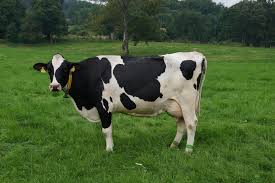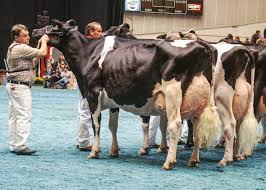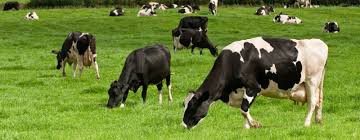Cattle, otherwise referred to as large ruminants, are a major source of livelihood for indigenous cattle owners in the tropical regions of Nigeria.
Efforts to improve and increase the productivity of cattle are crucial for enhancing the standard of living and nutritional status of both the owners and the entire country.
This is achieved through the supply of meat, milk, drought power, manure, blood meal, and social functions such as mobile banks and insurance against crop failures.
Read Also: How to Market your Matured Fishes for Profit
Origin and History of Domestication

The family of animals that includes all types of domestic cattle is known as the Bovidae. There are two types of domestic cattle in the world:
1. Bos Taurus (humpless cattle)
2. Bos indicus (humped cattle)
Hamitic longhorn and shorthorn types of cattle are believed to be the ancestors of all the Bos Taurus breeds. The origin of humped cattle, or Zebu, is traced to Western Asia. Hamitic longhorn, shorthorn, and Zebu-type cattle were introduced into Africa by immigrants from Western Asia.
Importance of Cattle

1. Meat and Milk Supply: Cattle play a significant role in meeting over 70% of Nigeria’s meat demands, and their milk is the most widely accepted compared to other ruminants.
2. Draught Power: Cattle are a vital source of farm power in Nigeria and other parts of the world. This source of power is accessible to peasant farmers who cannot afford mechanized equipment. It has greatly reduced reliance on expensive mechanized farm power, enhanced crop production, and reduced the drudgery associated with farming.
3. Manure: Cattle dung maintains soil fertility, and farmyard manure, consisting of cattle fecal matter, is used to fertilize the soil. Cattle dung is rich in NPK (Nitrogen, Phosphorus, Potassium) and helps reduce the cost of fertilizer in mixed farming systems.
4. Blood Meal, Hooves, and Horns:Hooves and horns of cattle contain fibrous protein and are used in the gum industry. Blood meal and bone meal are valuable for feeding farm animals.
5. Farm Diversification: Cattle provide opportunities for farm diversification by producing both milk and meat, while crop residues serve as feed for the animals, keeping the farmer productive year-round.
6. Social Functions: Cattle maintain and uplift social prestige, reflecting the status of their owners. They serve as mobile banks for nomads, act as insurance against crop failures for mixed farmers, and are important in religious ceremonies and marriages among traditional groups.
Read Also: Reasons why Feeding Fishes is very Important
Classification of Cattle

Cattle are classified based on their utility as milk type (dairy), beef type, draught type, or multipurpose.
1. Dairy Cattle: Dairy cattle have narrow body conformation with wide hindquarters. Their udders or mammary glands are large and well-developed, and the top line is straight with a wedge shape. Dairy cattle are generally more docile due to generations of selection and handling. There are few uniquely recognized African dairy breeds.
2. Beef Cattle: Beef cattle are blocky, have a rapid growth rate, and are more aggressive than dairy cattle. The Boran cattle of East Africa are among the best-known African beef breeds. These cattle have a low skeletal proportion relative to muscle, which ensures a high dressing percentage.
3. Draught Cattle: Draught cattle are hardy and capable of enduring significant stress during work. They are typically docile and are found in sedentary agrarian societies of Asia and Africa. Many breeds in West Africa, East Africa, and Southeast Asia can be converted into draught breeds, with castration of young bulls often required to increase docility.
4. Multi-purpose Cattle: In less developed areas, cattle are often not selected for a single purpose. They may serve multiple roles, such as producing both meat and milk, or providing both power and milk.
In conclusion, cattle, as large ruminants, significantly contribute to the nation’s meat and milk supply. Generally, Bos Taurus (humpless cattle) are considered temperate breeds, while Bos indicus (humped cattle) are regarded as tropical breeds.
The origin of large ruminants and their important role in Nigerian agriculture has been explored, along with the classification of these animals based on their productivity.
Do you have any questions, suggestions, or contributions? If so, please feel free to use the comment box below to share your thoughts. We also encourage you to kindly share this information with others who might benefit from it. Since we can’t reach everyone at once, we truly appreciate your help in spreading the word. Thank you so much for your support and for sharing!
Read Also: How to Control Pests in the Garden
Frequently Asked Questions
We will update this section soon.

